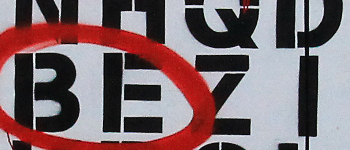Name
I’m so happy, SPLAT
Purpose
With a nemesis on the way, raise the stakes by contrasting the encroaching danger with scenes of contentment and stability.
Summary
Bad things happen, and the foreknowledge of impending doom drives tension and involvement. The step of a killer’s tread on the stairs; a car approaching at speed, its driver talking animatedly on his phone; an overloaded socket extension sparking and smoking; the readers knows that trouble is on the way for someone, and if you’ve done your job properly it’s someone they care about.
By making your victim happy, you can further increase the sense of dread. There’s further to fall, after all. Take a tip from TV and intercut the approach of disaster, with scenes of contentment. All this will soon be lost, you’re saying.
Applicability
Where you are portraying an impending threat, and wish to increase both tension and impact. Or where a disaster has already befallen, and you want to intensify emotional effect and the impact of discovery.
Discussion
The key to the first form of this pattern is the coexistence of the oncoming threat and the victim’s (happy, or expectant, or serene state). An unknowing victim. We identify with the contentment, and the journeying nemesis represents a ticking clock. Every second of happiness we see is a second that could be spent in flight or preparation.
The form can be varied. Doom may already have been visited upon a protagonist’s loved one. In this version the protagonist returns to a refuge, and expects (or at least hopes) to be welcomed by family, friends, and children. He might remember happy times, imagine the scene of his arrival, recall the circumstances of his leaving.
The protagonist may be oblivious to the horrors ahead, but we fear the worst. This may be because the dreadful acts are shown to us against the backdrop of his journey, in a triple juxtaposition with the scenes of contentment, or because the story has dropped us enough hints to engender a sense of foreboding. In the latter, case, of course the possibility of a happy outcome remains, and is a major driver of the tension. In this case it’s not just ‘how will he cope with this terrible blow?’, it’s also,’maybe he’ll get there in time’.
So some of the elements of this pattern include:
- Identification of happiness/contentment with a state of innocence
- Identification of the threat with despoilation and invasion.
- Fear that the threatened will not escape
- Fear that help will not arrive in time (possible happy expectation in the protagonist as the attack unfolds, or belated realization on the part of the protagonist.)
- Fear for a protagonist, in anticipation of the psychic damage s/he sustain in discovering the scene of the attack
- As TVTropes notes, this moment can be the inciting incident, propelling a reluctant adventurer into a quest, or can remove a barrier to adventure.
Related patterns/tropes
TVTropes: Stuffed Into The Fridge, Too happy to live, The call knows where you live
A real example
In Gladiator, Maximus rides back to his farm where his wife and child wait for him. Weak with hunger and exhaustion he worries about them as he approaches. We see them, then, on the farm. It’s an idyllic scene. There is plenty, and balance. But out of the distance a squad of soldiers ride towards them. Maximus’s son runs to meet them, no doubt thinking his father, a soldier, is returning. His mother cries out, but too late. The lead soldier cuts the boy down and rides on. Maximus connects somehow to this moment, and spurs his horse forward. He knows that something is terribly wrong. He rides in to the farm to find it burning, with bodies strewn about. Finally he sees his wife and son hanging in the sun.




